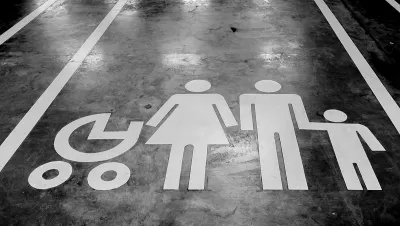A growing number of signs show major shifts in U.S. population growth—most emerged before the pandemic.

"Growth in the number of U.S. households during the 2010s slowed to its lowest pace in history, according to a Pew Research Center analysis of newly released 2020 census data."
An article by Richard Fry, Jeffrey S. Passel, and D'vera Chon shares news of the new analysis, explaining both causes and consequences for the data. Starting with causes, the article lists several long-term demographic trends:
- "A fundamental driver of household growth is population growth. The population residing in households (that is, those who do not live in group quarters such as dorms, prisons or nursing homes) grew by only 7.5% in the last decade, the slowest population growth since the 1930s."
- "Beyond population growth, another demographic trend also slows growth in the number of households: Multigenerational family living has been increasing. In 2016, 20% of the U.S. population lived in multigenerational family households, up from 12% in 1980."
Other trends like the share of Americans living alone are also explained in the article.
The article is less specific about the consequences of these trends, but predicts that the subpar growth of households will impact the demand for housing and durable goods like furniture and appliances. "The slowdown in economic growth over the 2010s is partly a reflection of weak household formation and low levels of home building," according to the article.
More from Planetizen on 2020 Census data findings:
- Where New Asian Residents Are Transforming New York City (October 2021)
- Census Data Reveal Increasing Density in the U.S.—Reversing a Two-Decade Trend (September 2021)
- News Brief: Census 2020 Population Data (August 2021)
- 2020 Population Growth Rates for the 50 Biggest U.S. Cities (July 2021)
FULL STORY: U.S. household growth over last decade was the lowest ever recorded

Planetizen Federal Action Tracker
A weekly monitor of how Trump’s orders and actions are impacting planners and planning in America.

San Francisco's School District Spent $105M To Build Affordable Housing for Teachers — And That's Just the Beginning
SFUSD joins a growing list of school districts using their land holdings to address housing affordability challenges faced by their own employees.

The Tiny, Adorable $7,000 Car Turning Japan Onto EVs
The single seat Mibot charges from a regular plug as quickly as an iPad, and is about half the price of an average EV.

Seattle's Plan for Adopting Driverless Cars
Equity, safety, accessibility and affordability are front of mind as the city prepares for robotaxis and other autonomous vehicles.

As Trump Phases Out FEMA, Is It Time to Flee the Floodplains?
With less federal funding available for disaster relief efforts, the need to relocate at-risk communities is more urgent than ever.

With Protected Lanes, 460% More People Commute by Bike
For those needing more ammo, more data proving what we already knew is here.
Urban Design for Planners 1: Software Tools
This six-course series explores essential urban design concepts using open source software and equips planners with the tools they need to participate fully in the urban design process.
Planning for Universal Design
Learn the tools for implementing Universal Design in planning regulations.
Smith Gee Studio
City of Charlotte
City of Camden Redevelopment Agency
City of Astoria
Transportation Research & Education Center (TREC) at Portland State University
US High Speed Rail Association
City of Camden Redevelopment Agency
Municipality of Princeton (NJ)




























